Description
Name in North American Boletes: Boletus rhodosanguineus
Genus: Rubroboletus
- Genus 2: Boletus
Species: rhodosanguineus
Common Name: Perfumed Bolete
Tells: Yellow cap flesh tastes sweet, smells of over-ripe fruit when fresh & perfume when dry, & blues quickly before resolving to dull grayish-blue.
Other Information: Viscid red cap gets brown tones & fissures in age, & stains dark red-purple before fading to gray. Blue bruising red pores, often w/a yellowish margin. Young specimens can have yellow pores & older ones can fade to orange. Yellow to pale pink stem has red netting, becomes purple-red at the base, often has brownish spots, & stains blue (becoming green in the reddish areas). Yellow stem flesh, w/burgundy-red & golden zones by the base, quickly blues. May grow in merged clusters. Likes oak, particularly red oak. Can be hard to distinguish from redder versions of Suillellus luridus, except luridus has a red/purple line where the tubes meet the flesh (the “subhymenium”), while rhodosanguineus has more of a yellow/green line. Its home is a band south of the great lakes, from Indiana through Ohio, into upstate NY, but occasional finds come from a much broader area.
Science Notes: DNA testing moved this mushroom into the newly erected genus “Rubroboletus.” NOTE: This is the “Bad News Boletes” genus that includes many of the worst sick-makers. Red flags should go off when you see it.
Edibility: The books say “Unknown” but I wouldn’t touch a Rubroboletus. It is marked as “avoid” on this site due to its actively dangerous relatives.
CHEMICAL TESTS:
- NH4OH (Ammonia): Pink areas on the cap skin flash bluish-slate, while brown areas flash a rusty color or stain dark brown. Cap flesh stains orange or bleaches from blue to dingy yellowish-cream.
- KOH: Pink areas on the cap flash bluish-slate, while brown areas stain dark brown. Cap flesh stains bright orange, resolving to dull yellowish-orange.
- FeSO4 (Iron Salts): No data.
Links:
 |
0 |  |
0 |  |
148 |  |
304 |

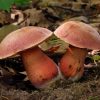
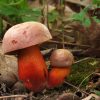
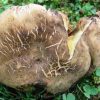
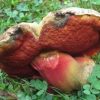
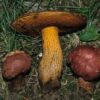
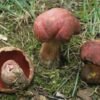
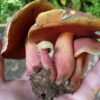
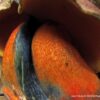
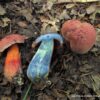
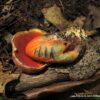
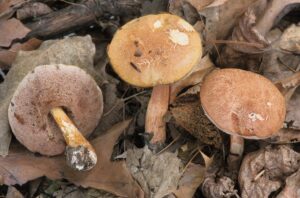

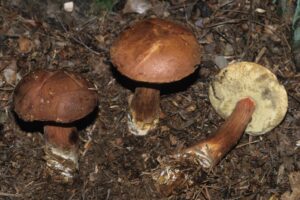
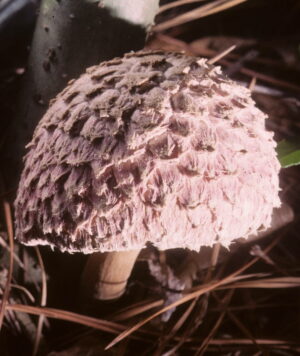
Got something to discuss?